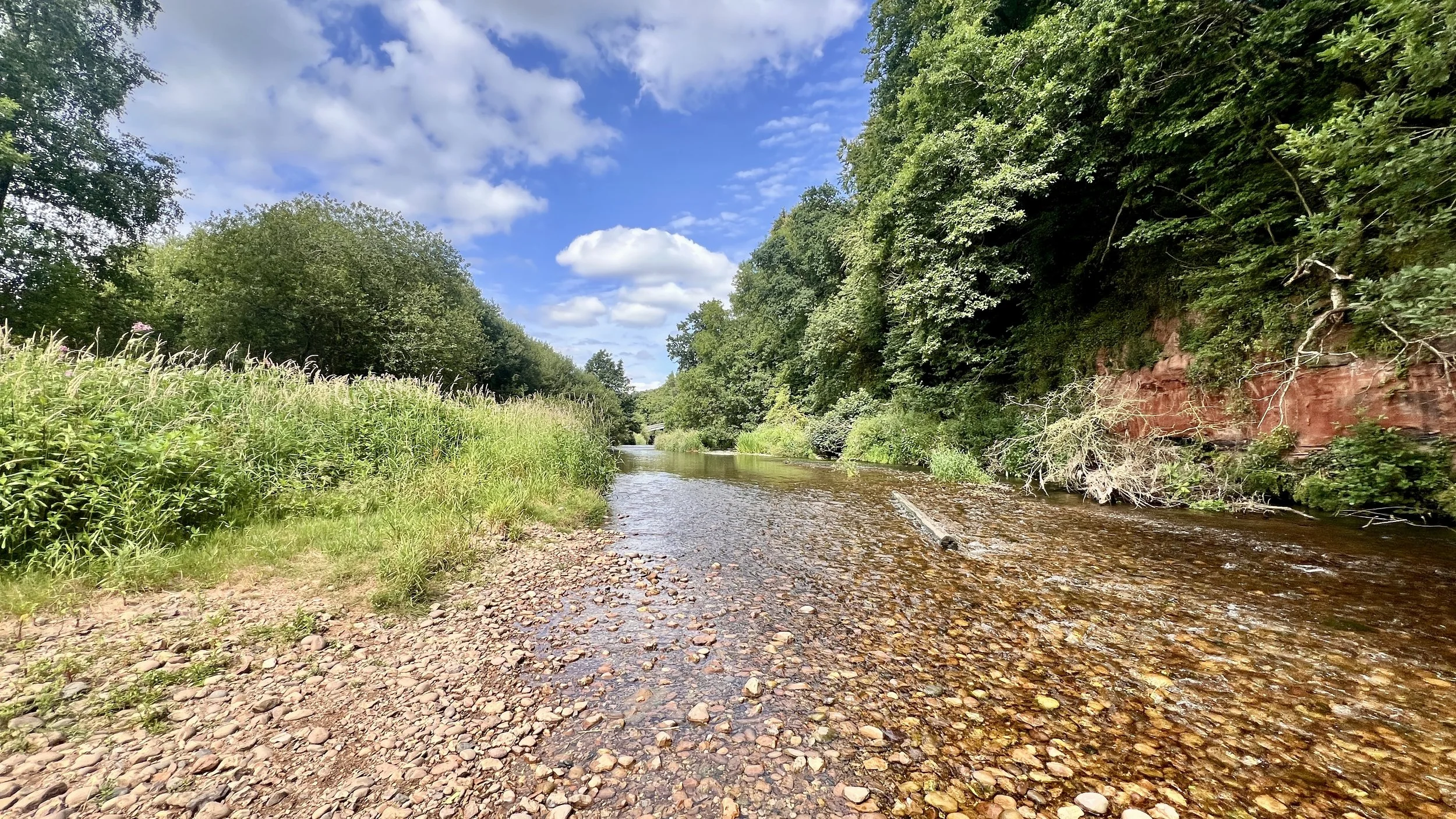UK Wildlife News: Stories and Photo Projects 17th August 2025
Rivers, Comebacks, and a “Ticking” Return: Three UK Stories to Shape Your Next Photo Project
This week brought three UK conservation headlines with real creative potential for wildlife photographers. First, England’s National Drought Group warned of a nationally significant water shortfall, with reservoirs below average and rivers running thin. Second, targeted projects delivered gains for 150 threatened species—from water voles to salmon—by creating habitat and safe breeding sites. Third, the large marsh grasshopper clicked back into Norfolk after more than eight decades away. Each story suggests a different field brief: document scarcity and stewardship, show recovery in action, and celebrate a species’ return. Here’s how to translate them into pictures that help.
1) Water on a Knife-Edge — Photographing Drought, Not Disaster
Drought is subtle until you know what to look for. It’s the exposed gravel bar that’s never usually visible, reedbeds marooned from channels, a weir that suddenly looks oversized. Our job isn’t to sensationalise—it’s to make careful, comparable frames that show change and context.
Where to point the lens
Repeat frames on rivers: Choose a bend, riffle, or weir and return weekly from the same tripod height and focal length. Include fixed reference points (bridge pier, boulder) so dropping levels read clearly.
Wetland margins: At first light, photograph the line where healthy reed meets exposed mud. Footprints—heron, fox, waterfowl—tell how wildlife navigates the edge.
Stewardship in action: Make honest portraits of people fixing leaks, anglers oxygenating fish, volunteers shade-planting banks. Solutions matter as much as symptoms.
Technique & ethics
Polariser to tame glare and reveal shallow textures.
Manual exposure for repeatability; log time, lens, height.
Don’t wade spawning gravels or crowd stressed fish; seek permission before photographing operations.
Micro-project: “The Same Bend, Six Mornings”—one frame per week with short notes on water level and wildlife seen. A simple slider gallery makes change obvious without drama.
2) Targeted Recovery — Making Species Projects Visible
Conservation agencies report tangible progress for 150 priority species, backed by habitat creation and practical guidance. That’s a gift to photographers: a menu of species-plus-habitat stories to document ethically with partners on site.
Build the narrative in layers
Water vole corridors: Start with habitat context—calm dawn reflections in re-profiled ditches. Add the human layer: contractors shaping soft banks, rangers checking burrow signs, volunteers mapping latrines.
Dormouse hedgerows: Photograph the matrix (linked hedges, coppiced rides, nest tubes). With licensed teams, record methods—tube checks, habitat notes—not handling close-ups.
Salmon burns: Wide, low perspectives reveal how woody debris, shade, and flow structure transform a channel. If invited to a juvenile survey, focus on process: kick-samples, thermometers, waders in careful formation.
Technique & permissions
Lens trio: 16–35 mm for habitat; 70–200 mm for people; 100 mm macro for detail.
Keep colour natural and compositions tidy—recovery reads best when images are clear and honest.
Obey licensing rules; many species require strict handling permissions. Photograph the method and the place unless you’re part of a licensed team.
Micro-project: “Habitat • Hands • Hope”—three pictures per site: (1) the habitat wide, (2) hands doing the work, (3) a close detail signalling success (fresh vole feeding signs, a shaded riffle busy with insects). Add captions with practical “how to help” links.
3) Clicks in the Marsh — The Large Marsh Grasshopper Returns
After more than 80 years away, the large marsh grasshopper has been recorded again in Norfolk’s wet meadows. It’s charismatic—lime-green or pink-brown, long-legged, and famous for its “ticking” call—making it a perfect subject to illustrate how restored water levels revive an entire community.
Finding and framing
Timing: Warm, still mornings are best. Wind is your enemy; use sedge and tussock clumps as windbreaks.
Fieldcraft: Walk slowly, listening. Watch for a shift along sunlit stems. Approach on the shadow side and pause often.
Composition: Place the insect along the diagonal of a stem; leave space in the direction it faces. Keep hints of sedge and reed in the background to situate the portrait.
Technique & ethics
Macro (90–105 mm) at f/7.1–f/11 to hold eyes and forelegs; small diffuser or soft LED to avoid harsh speculars on the cuticle.
1/250–1/500 s to freeze twitches; raise ISO rather than sacrifice sharpness in a breeze.
Don’t chill or move insects; keep to permitted paths—marsh soils are fragile.
Micro-project: “Ticking Meadow”—a three-frame set: wide wet-meadow scene, mid-frame of sedge structure, tight portrait of the grasshopper. One sentence on how water management made the sighting possible.
One Cohesive Assignment:
Water • Work • Wild
Tie the trio into a month-long brief:
Water (Rivers/Wetlands): Repeat-frame a single river bend or marsh edge through a dry spell. Pair each image with a short note on levels and observed wildlife.
Work (Hands Restoring Habitat): Spend a morning with a local project—vole corridor, dormouse edge, salmon burn—and deliver a three-picture story: habitat, people, detail.
Wild (A Comeback Species): Photograph the large marsh grasshopper—or another species tied to recent restoration—producing one strong portrait plus one habitat frame.
Editing & delivery
Keep grading natural and consistent; let light and structure do the work.
Captions with purpose: who, where, when, what changed, and how readers can help.
Share a small image set with site managers; pictures are most powerful when they’re useful.
Kit, Conduct, Small Decisions
Kit: 16–35 mm, 70–200 mm, 400 mm+ for distant wildlife, 90–105 mm macro; polariser; small diffuser; tripod/monopod.
Notes: Log GPS, weather, species, behaviour, and names of teams—accurate captions build trust.
Ethics: Distance and welfare first; follow access rules; get consent for recognisable people; never disturb stressed wildlife.
Drought, targeted recovery, and a grasshopper’s return might seem separate. Through a viewfinder, they connect: water sets the stage, people do the work, and the wild answers back. Go make the pictures that show that cycle—clearly, respectfully, and with the kind of craft that helps conservation move.



